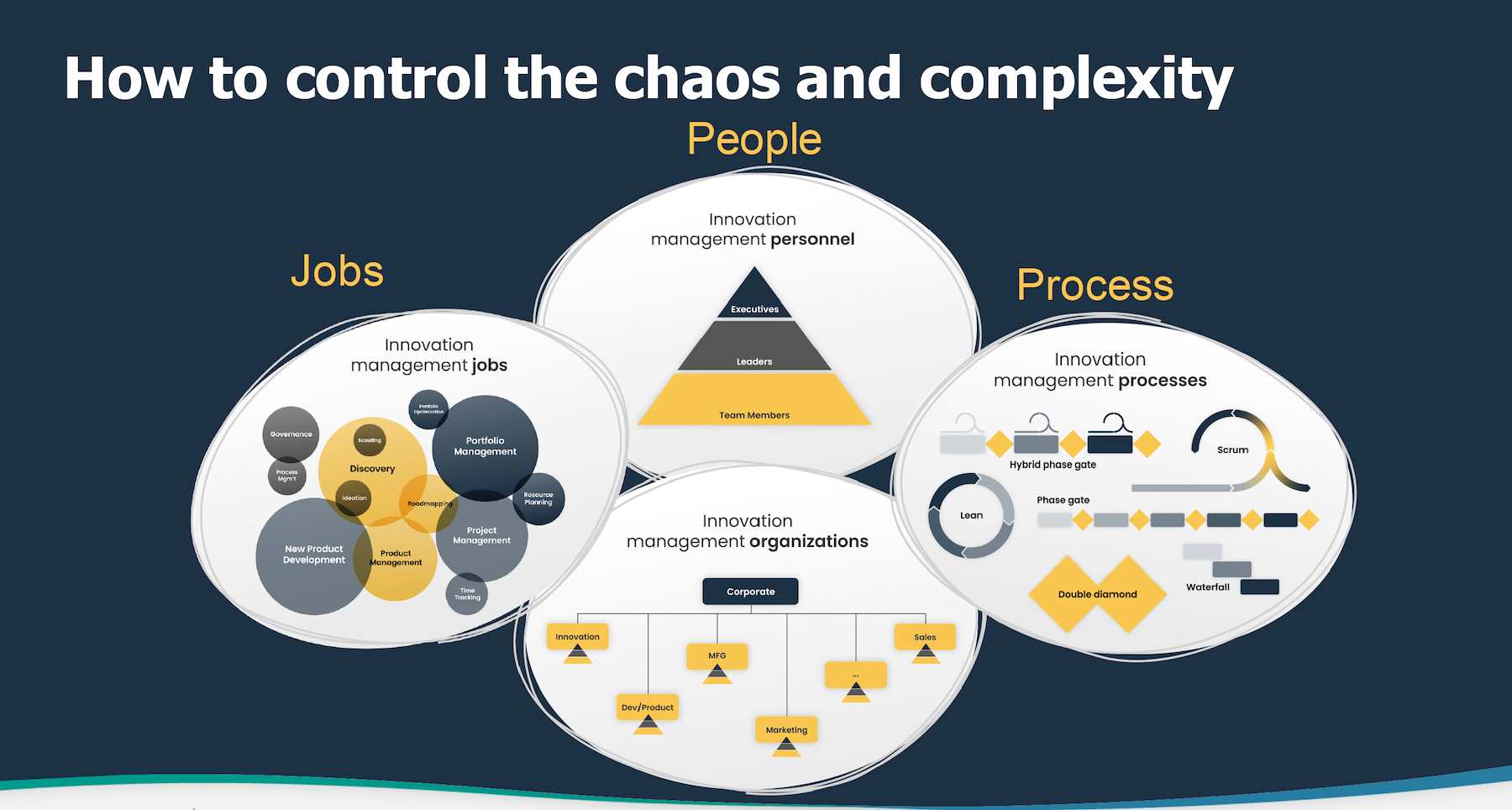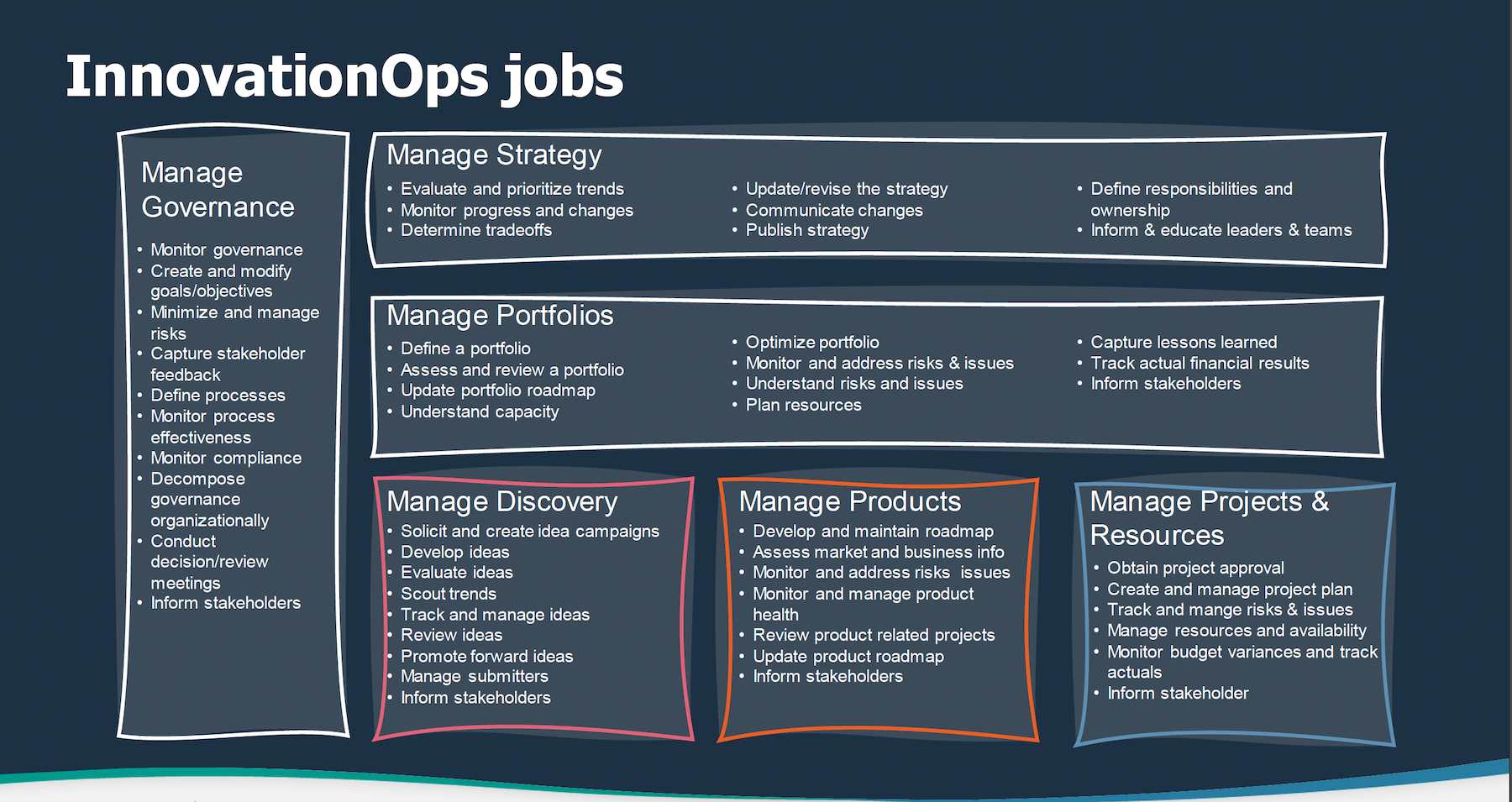As innovation leaders and teams we are tasked to enable our organizations to innovate at scale.
Essentially, that means driving innovation in predictable, reliable and efficient ways- doing it again and again, rather than being a one-day fly.
Last year alone, over $2.4 trillion was spent on R&D. Yet 90% of executives are unhappy with their innovation performance. One could say- that’s a lot of money for a lot of unhappy executives.
On average 35% to 50% of innovations fail. Not in terms of failing fast during experimentation, but failing after launch in the market. It’s that type of failure that really hurts. And it’s that type of failure that gets us to ask ourselves - how can we do innovation better?
We tuned in to recent webinars by Sopheon’s Mike Bauer and Paul Heller to get answers to that billion-dollar question.
Paul navigates the technology landscape for both Sopheon and its customers and identifies the business values linked to investments in innovation management systems and processes. He advises executives on how to be more successful in innovation and execution of strategies such as sustainability. He regularly speaks and writes about innovation to business audiences and hosts a weekly podcast on innovation.
Mike has thirty years of experience in building and leading cross functional teams and organizations to successfully define, develop and bring new companies and products to market. His experience spans multiple industries with experience in hardware, software and services in startups to Fortune 500 companies.Currently, Mike serves as Sopheon’s Chief Product Officer and leads the team in Product Management, Design, and Product Marketing and is responsible for Sopheon products throughout their entire lifecycle.
In this first article summarizing their webinar series, we’ll explore what InnovationOps is, the jobs to be done within innovation management, as well as critical enablers for success.
Shifting From Struggling to Success
If we look at organizations that are struggling with innovation, we typically see a disconnected, unreliable and inefficient spaghetti maze of different strategies and different units thinking they own different pieces of those strategies.
Those units aren’t aligned nor working together to deliver upon the strategies, and there’s limited governance of the processes from start to finish and hardly any suitable tools to manage those processes.
In fact, they often may use the same label of “innovation” for completely different initiatives- without a clear definition of innovation and what it means for the organization, it’s fundamentally impossible to be successful. No wonder up to half of their innovation efforts fail.
Other organizations have found a way to control the chaos and complexity that innovation by nature represents, by operationalizing it and bringing together the people, the jobs they do and the processes the people use to guide their jobs, supported by a clear structure.

This synchronized system is called InnovationOps, which marks the next phase of evolution of innovation management in large organizations- like DevOps that was coined in 2009, to operationalize software development. Most software professionals believe it allows them to produce higher quality deliverables, and most reported reduction in time to market for the software and services they developed.
InnovationOps is the combination of the cultural philosophies, practices, people's and tools, that increases the ability for an organization to innovate at scale.
The companies that already have embraced InnovationOps are reporting promising outcomes. Think 30% faster time to market, 75% increase in portfolio value, 20% in savings by process efficiencies and 50% reduction in new product failure rate.
For sure, the executives in those companies must be happier with that increased innovation performance.
The Jobs in Innovation Management
For starters, this does require a change in how we think about jobs. Innovation jobs are typically described as a mix of titles, functions and disciplines. You may find labels like ideation, project management, product development and resource allocation, but they don’t describe what people actually need to do to drive innovation.
Instead, a holistic way to look at jobs in innovation management is to categorize them into Managing Governance, Managing Strategy and Managing Portfolio, with Discovery, Products and Projects/Resources under Portfolio.
Starting with Discovery, by default you will get out of that job both problems and opportunities to solve, and ways to solve those. These may generate Products to manage, which will kick off a number of different Projects. These are all managed as Portfolios, and they filter back up to the Strategy and Governance.
If you start looking at innovation jobs this way, divorcing them from the specific functions in the organization and titles people may have, it becomes a lot clearer.

Of course, every company is fundamentally different. That’s why these jobs are organization independent. Whether you have a product management organization, or brand managers are doing these jobs, when you approach it from the perspective of the innovation jobs, it doesn’t matter. Jobs are adaptable to market and organizational dynamics. This also helps executives to diagnose how the organization is performing overall, and to spot and address gaps accordingly.
Critical Enablers For Success
Embracing InnovationOps as an operating model is not just a matter of putting structure in place and rethinking how we look at the jobs to be done in innovation management. Mike and Paul suggest there are several critical enablers for success.
Even if there is a separate unit or area for innovation within your organization, fostering interdisciplinary collaboration and cross-functional teams is necessary. The people doing your innovation jobs should have platforms to share knowledge and learnings.
This also helps to cultivate a culture of continuous learning, and the agility that comes with it. This way, you can embrace failure with the idea that sooner is better. As such you make sure that failure happens in the earliest possible stage, so that it doesn’t cost you much.
Beyond these cultural components, you need the proper supporting infrastructure. The right tools will help the people executing the processes to do the jobs, so they can make better decisions. Moreover, they help provide the required openness and transparency to all stakeholders, including senior management.
Of course, the tools you use need to be configured to fit the unique processes and workflows that work for your organization. You need them to integrate with other systems of record within the company, also to get and feed relevant data to make decisions.
Without the right supporting tools, innovation at scale isn’t even possible.
Curious to know more? Check further information about InnovationOps here

